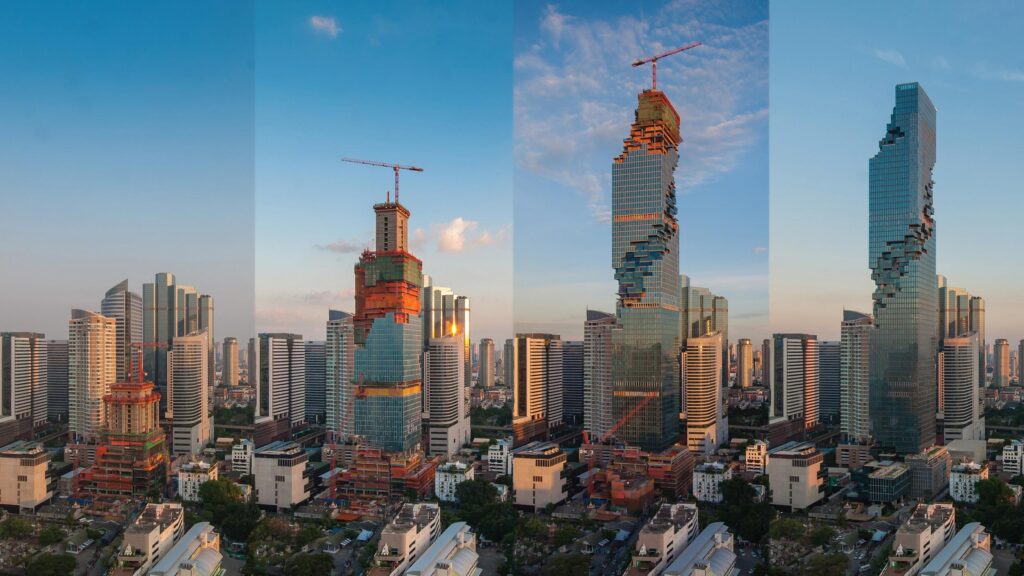ENCN
Home / Post-Earthquake Reflections on Pixel Tower: Why Membrane Structures Stand Out
Post-Earthquake Reflections on Pixel Tower: Why Membrane Structures Stand Out
On March 28th, a 7.9-magnitude earthquake struck Myanmar, sending strong tremors through Bangkok, Thailand. The noticeable swaying of the Pixel Tower during the quake left many people deeply concerned. As a landmark building costing $515 million and standing 320 meters tall, its performance in the face of natural disasters has triggered in – depth thinking about architectural structures.

Under the influence of such a powerful earthquake, traditional architectural structures often face enormous challenges. In contrast, membrane structures demonstrate significant advantages in many aspects, which is precisely what we are going to explore today.
A membrane structure is an architectural form primarily composed of high – strength flexible membranes, taking shape through tension. It is mainly categorized into tensile membrane structures and air – supported membrane structures. Its numerous unique features make it stand out in the field of architecture.
From an earthquake – resistance perspective, the lightweight nature of membrane structures is a major advantage. Compared with traditional structures, membrane structures are significantly lighter. For example, the self – weight of a membrane – structure grandstand is only one – tenth of that of a traditional grandstand. During an earthquake, the lighter weight means less seismic force, effectively reducing the building’s sway and minimizing the risk of structural damage.
Membrane structures also possess excellent flexibility and deformation capabilities. When subjected to wind or seismic loads, they can adapt to external forces by deforming. Just as a membrane structure sways like a fluttering flag in the wind without easily getting damaged, it can also withstand large displacements during an earthquake without permanent deformation, thus ensuring the overall stability of the building structure. This characteristic allows membrane structures to better “overcome rigidity with flexibility” when natural disasters such as earthquakes strike.
In terms of safety, membrane structures also perform outstandingly. Lightweight tensile membrane structures designed according to current standards can maintain excellent stability under horizontal loads such as earthquakes. Even in the extreme case of accidental collapse, due to their light weight, the potential danger is much lower than that of traditional structures. Moreover, when a membrane structure tears, if the rigid support components are properly designed to prevent collapse, the potential risk is further reduced.
Membrane structures have many other advantages. Their good light – transmittance provides abundant natural lighting for buildings, reducing the need for indoor lighting and achieving energy savings. At night, they can create a unique lighting atmosphere, making the building resemble a sculptural masterpiece of light. With highly flexible design possibilities, they can take on various unique architectural forms, perfectly fitting the large – span spaces of sports venues or the artistic shapes of landscape buildings, providing architects with broad room for creative expression. Additionally, membrane structures feature fast construction and short construction periods, effectively reducing engineering costs.
Through the analysis of the advantages of membrane structures, we can see that in the face of complex and changeable natural environments, membrane structures offer new possibilities for building safety and innovation. The shaking of the Pixel Tower serves as both a warning and an inspiration for the exploration of new architectural structures. It is believed that in the future, membrane structures will be applied in more buildings, bringing us more experiences of safety and beauty.
#membrane structure #Tensile Membrane Structures for Landscape Architecture
#Fabric structure
#tensile membrane structures
Post-Earthquake Reflections on Pixel Tower: Why Membrane Structures Stand Out




